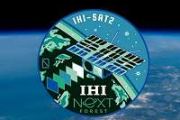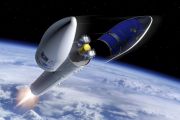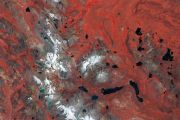
Copernical Team
Arctic simulation of moon-like habitat shows well-being sessions can improve mental health in extreme isolation
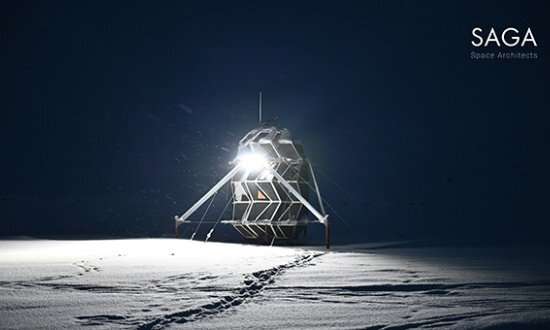
Researchers at the University of Surrey and the University of Milano-Bicocca have partnered with SAGA Space Architects to investigate the psychological impact of social isolation in harsh environments, such as on the moon. This research formed part of the LUNARK project which explored how humans could survive on the moon and have successful habitats there in the future.
The LUNARK project was the first ever Arctic simulation of a lunar mission. As part of the project, two space architects, Sebastian Aristotelis and Karl-Johan Sørensen, designed an airtight, portable, foldable pod that enables its occupants to live self-sufficiently. From September 2020, the architects lived inside the pod for 61 days in northern Greenland—a place that reflects the harsh environment of the moon and its freezing temperatures. The pod was built to withstand external threats—which was tested in the arctic simulation in the form of a visit from a local polar bear—and was designed to leave no trace of waste in the environment.
To investigate the impact of social isolation on the men, the researchers measured their perceptions of time, their positive and negative emotions, levels of satisfaction of basic psychological needs (e.g.
Amazon signs on launch partners for space internet
 Amazon on Tuesday announced deals for scores of launches to deploy a "constellation" of satellites in low orbit around the Earth to provide internet service to people below.
Amazon said that its contracts with Arianespace, Blue Origin and United Launch Alliance (ULA) are the largest commercial procurement of launch vehicles in history.
The overall cost and timing of launches booked to ma
Amazon on Tuesday announced deals for scores of launches to deploy a "constellation" of satellites in low orbit around the Earth to provide internet service to people below.
Amazon said that its contracts with Arianespace, Blue Origin and United Launch Alliance (ULA) are the largest commercial procurement of launch vehicles in history.
The overall cost and timing of launches booked to ma Juice minisite
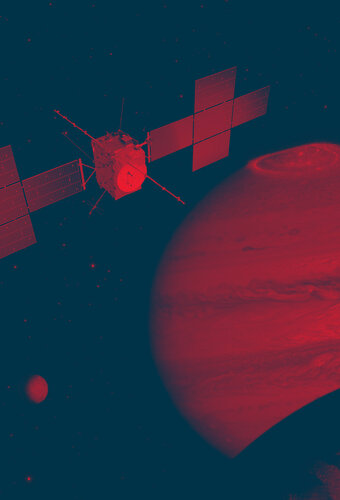
Juice: Jupiter Icy Moons Explorer
Juice: Jupiter Icy Moons Explorer
New technical concept for NATO's Future Surveillance and Control capabilities
 Airbus Defence and Space together with Northrop Grumman and seven industrial players forming the ASPAARO (Atlantic Strategic Partnership for Advanced All-domain Resilient Operations) team have been selected by the NATO Support and Procurement Agency (NSPA) to conduct one of three Risk Reduction and Feasibility Studies (RRFS). The studies aim to suggest technical solutions for the Alliance Future
Airbus Defence and Space together with Northrop Grumman and seven industrial players forming the ASPAARO (Atlantic Strategic Partnership for Advanced All-domain Resilient Operations) team have been selected by the NATO Support and Procurement Agency (NSPA) to conduct one of three Risk Reduction and Feasibility Studies (RRFS). The studies aim to suggest technical solutions for the Alliance Future Slingshot Aerospace wins US Space Force contract
 Slingshot Aerospace, Inc., a company building world-class space simulation and analytics products to accelerate space sustainability, has been awarded a $25.2 million, 39-month contract from the U.S. Space Force's (USSF) Space Systems Command with strategic support from SpaceWERX.
The contract will facilitate delivery of two key Slingshot Aerospace products: the company's Digital Space Twi
Slingshot Aerospace, Inc., a company building world-class space simulation and analytics products to accelerate space sustainability, has been awarded a $25.2 million, 39-month contract from the U.S. Space Force's (USSF) Space Systems Command with strategic support from SpaceWERX.
The contract will facilitate delivery of two key Slingshot Aerospace products: the company's Digital Space Twi SpiderOak and Lockheed Martin Space enter space cybersecurity + blockchain collaboration
 SpiderOak Mission Systems and Lockheed Martin (NYSE: LMT) Space's Mission Solutions business are developing and testing a zero-trust cybersecurity platform to secure data across the space data supply chain. The two companies have signed an agreement to field key components of the SpiderOak OrbitSecure platform. OrbitSecure allows national security and civil space agencies to harness the commerci
SpiderOak Mission Systems and Lockheed Martin (NYSE: LMT) Space's Mission Solutions business are developing and testing a zero-trust cybersecurity platform to secure data across the space data supply chain. The two companies have signed an agreement to field key components of the SpiderOak OrbitSecure platform. OrbitSecure allows national security and civil space agencies to harness the commerci German satellite EnMAP launches successfully
 It all began in 2003 with a competition announced by the German Space Agency at the German Aerospace Center as part of the National Space Programme. The task was to design and build a new type of hyperspectral instrument and a satellite to carry it, and to test both the instrument and its satellite for several years in the harsh conditions of space.
At the same time, an (inter)national com
It all began in 2003 with a competition announced by the German Space Agency at the German Aerospace Center as part of the National Space Programme. The task was to design and build a new type of hyperspectral instrument and a satellite to carry it, and to test both the instrument and its satellite for several years in the harsh conditions of space.
At the same time, an (inter)national com HENSOLDT Cyber and Beyond Gravity team up for robust satellite cybersecurity
 HENSOLDT Cyber will supply its high security IT operating system TRENTOS to Beyond Gravity's for its latest satellite computer . The company's say this will ensure a high level of IT security for satellites is at the heart of today's efforts to make satellites more robust and reliable.
"As satellites have become increasingly critical to the infrastructure of modern society, there is an inc
HENSOLDT Cyber will supply its high security IT operating system TRENTOS to Beyond Gravity's for its latest satellite computer . The company's say this will ensure a high level of IT security for satellites is at the heart of today's efforts to make satellites more robust and reliable.
"As satellites have become increasingly critical to the infrastructure of modern society, there is an inc BlackSky expands constellation to 14 satellites
 BlackSky's (NYSE: BKSY) newest satellites successfully began revenue-generating commercial operations for customers, taking high-resolution images and creating analytics within a company record of 12 hours after launch.
The company expanded its constellation from 12 to 14 high-resolution satellites following the successful RocketLab launch
Without Mission a Beat" on Saturday, April 2. Th
BlackSky's (NYSE: BKSY) newest satellites successfully began revenue-generating commercial operations for customers, taking high-resolution images and creating analytics within a company record of 12 hours after launch.
The company expanded its constellation from 12 to 14 high-resolution satellites following the successful RocketLab launch
Without Mission a Beat" on Saturday, April 2. Th Satellogic launches 5 more satellites on SpaceX Transporter-4 mission
 Satellogic Inc. (NASDAQ: SATL), a leader in sub-meter resolution satellite imagery collection, has announced the launch of five additional spacecraft from Cape Canaveral Space Force Station. The satellites were delivered to a sun-synchronous low-Earth orbit on SpaceX's Transporter-4 mission on April 1, 2022 onboard the Falcon 9 reusable, two-stage rocket, under SpaceX's Rideshare program. All fi
Satellogic Inc. (NASDAQ: SATL), a leader in sub-meter resolution satellite imagery collection, has announced the launch of five additional spacecraft from Cape Canaveral Space Force Station. The satellites were delivered to a sun-synchronous low-Earth orbit on SpaceX's Transporter-4 mission on April 1, 2022 onboard the Falcon 9 reusable, two-stage rocket, under SpaceX's Rideshare program. All fi 

















